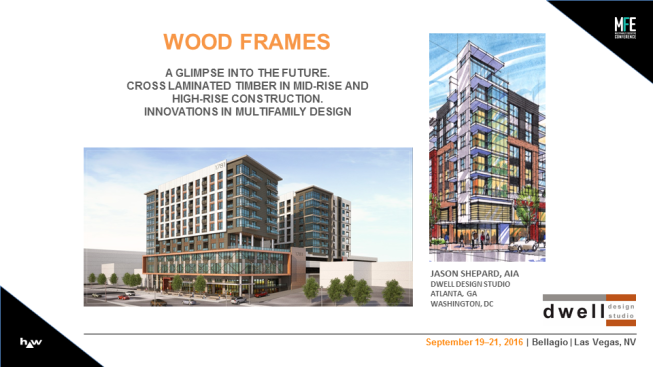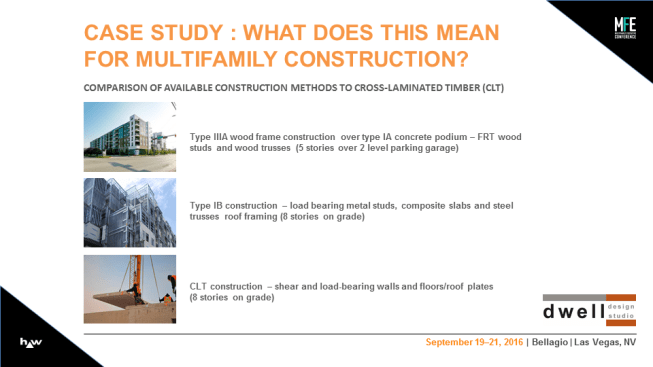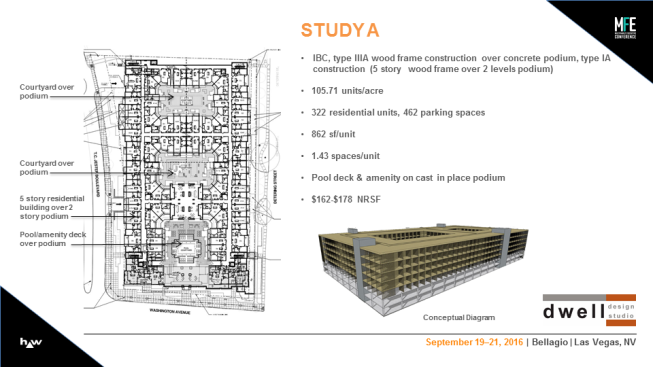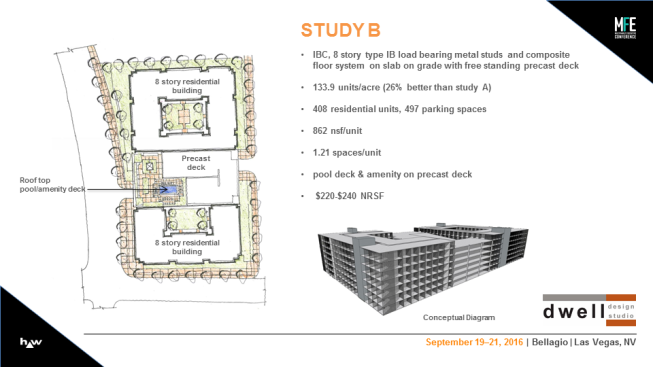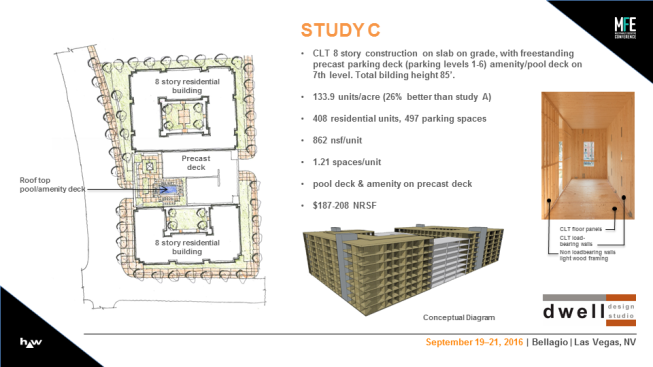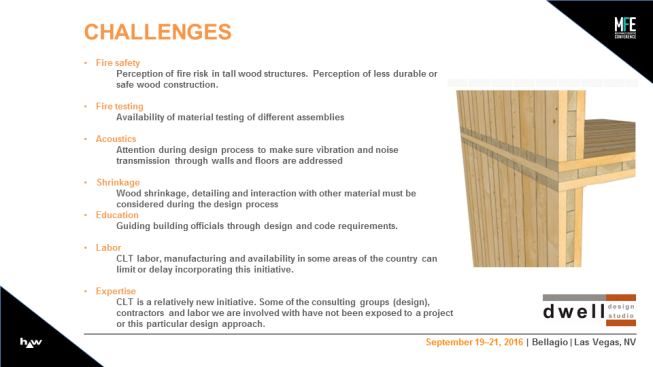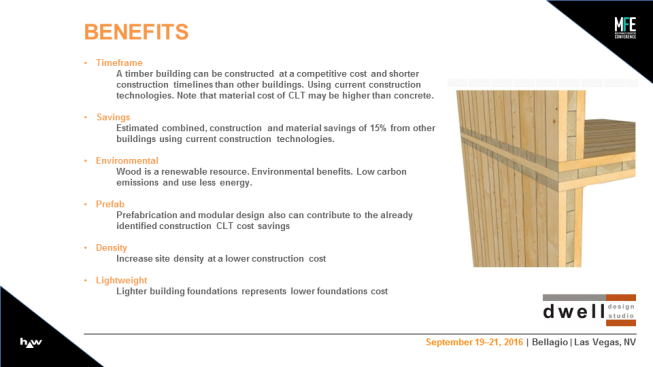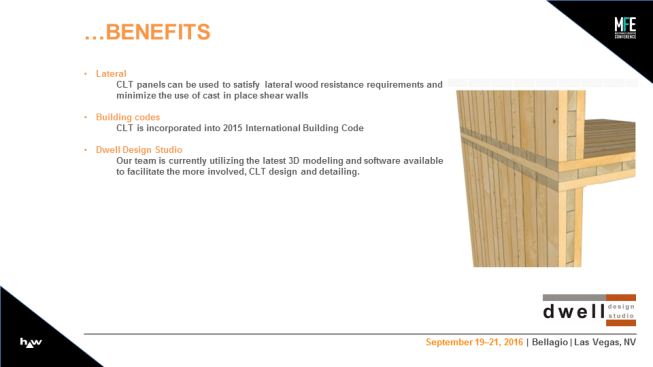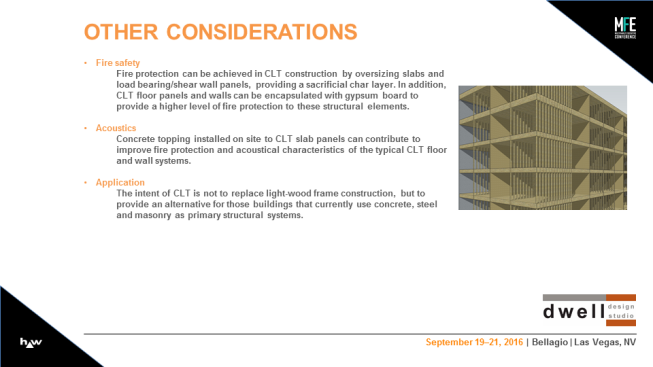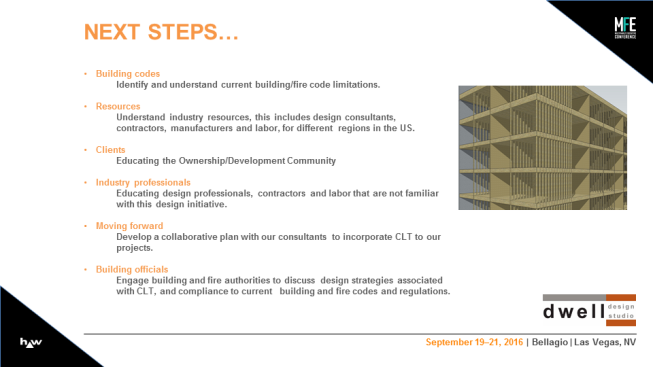Fire marshals around the country may not be comfortable with cross-laminated timber (CLT) in mid- and high-rise construction, but at the Multifamily Executive Conference in Las Vegas last month, Benton Johnson, associate at Skidmore, Owings & Merrill, and Jeff Morrow, program manager of construction at Lendlease, painted a realistic picture of how CLT could be viable in the future. In fact, Morrow pointed out that the compartmentalized nature of CLT might actually confine fire to one area, slowing its spread.
The panelists discussed other obstacles to using CLT, as well, including noise transmission and wood shrinkage as well as educating building code officials about the product and teaching laborers how to install it.
But there are also many benefits to CLT. When properly installed, for example, it can speed build time and cut waste, which reduces cost, according to the panelists. Savings can also be found in increased density, lighter building foundations, and prefab and modular design construction.
While acceptance from building officials remains a hurdle, CLT has been included in the 2015 International Building Code.


